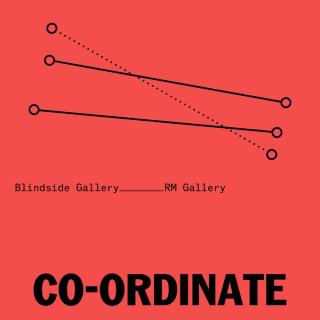

Co-ordinate: RM Gallery + Blindside ARI
Bethany O'Connor, Emmy Robinson-Shaw, Mark Schroder, Georgia Cheesman
9 Sep–30 Nov 2022
Are you surprised that the gallery still exists?
(RM) Having talked to a few of the original members, and those who have helped out, it is pretty surprising given the effort required to keep things ticking over. RM was started by 6 students in a small room around the corner from their art school. It has now lasted 25 years and has become a bit of an ‘institution’.... when there was never any intention to become one. The informality – of passing the gallery down through various hands – makes it fairly easy for new members to come on board and bring their ideas and energy to keep things ticking over.
RM has also been lucky to get funding to help cover rent and pay artists. Rent is the big cost; finding time is always tricky. And funding is harder to come by. It is always a push to keep going. But somehow it has.
(BS) It’s quite impressive that Blindside has been around for almost 20 years. Blindside has felt like such a consistent part of the city’s art community for years that it almost seems unimaginable without it (although this is not the point). So many artists have passed through the space, and so many people have contributed their time to keep it open.
Duty of Care
- Temporary custodians of the gallery and the archive
- Precarious nature of funding - contestable and only year to year
- Different sources of funding to keep things going
A physical space
- To show, to make, for community.
- The actual space is important, where it is, how it can be used.
Worst Case Scenarios
- What happens if we cannot afford to go on?
- Where does the archive go? A library or storage or given away/distributed back out into the world. [Even sold?]
- Is the website maintained as an archive?
- Online only? The gallery becomes an online space for work.
We have also been thinking about failure, and how failure can be generative. Failure in terms of self-organised practice, and also more broadly in terms of the ARI.
Moving around, changing location - how has this changed the way the gallery operates?
(RM) It has probably been useful to move; to change things up. Means things don’t get too stale.
The various ‘rooms’ have all had different quirks. Looking back at old photos, the gallery spaces have got a little ‘shinier’ over time – polished concrete and white walls compared to the old carpeted spaces. Being up on K Rd for the past 14 or so years has been useful. To be part of an established community of various arts related stuff, including public and commercial galleries, means people can go to a few places in an afternoon or pop between openings.
The different spaces also evoke different eras – the different people involved in the gallery and the different art being made. Each space, or iteration of RM, becomes a time capsule for that particular moment. The changing names and evolving logos certainly help distinguish the various phases.
Blindside has always been located in the Nicholas Building. How does having a fixed/consistent space for almost twenty years impact the ethos of the space?
(BS) Blindside’s existence is forever entwined with the Nicholas Building, where it has lived for the last 18 years. Without the Nicholas Building there may not have been a Blindside, as it was understood to be a central location for people to meet and show work. Originally, Blindside only occupied one gallery space, and the other was rented out as a studio. Having two spaces has allowed our programming to shift, and for artists to present work in dialogue with other artists.
People will wander out of the elevator and ask if Blindside is still around the corner, and we are still able to benefit from having opening events through the Nicholas Building on the same night, whilst also maintaining our own identity. And yet, Blindside could exist elsewhere and in many ways does: online, offsite, as a collective of people.
How has the identity of RM been preserved following 20+ years of handovers and location changes?
(RM) The identity of RM has developed over time – the various logos alone attest to that. But what remains constant is a simple approach focused on helping artists exhibit without any overarching curatorial direction; a ‘here’s the keys, do what you want’ approach.
The slow transition between members means there’s always some old hands around to get the new crew up to speed and pass on the RM ethos. At the moment there are several new members joining RM with a few of the existing crew moving off to do other things. The informality (and lack of hierarchy or formal structure) means people can leave to focus on their own art making, residencies, and PHDs. New people join, pick up certain responsibilities (website, accounts, etc), and keep things moving. There’s a tendency to stay for about 3 years, but some help out for a year or two, others last for several years. That overlap means there’s continuity to pass down knowledge (plus the former members are available if need be).
Each iteration of RM seems to revisit the ‘ethos’ or ‘mission’ (or whatever it is called) to make sure the gallery remains relevant and useful; that the fundamental idea of “a space to gather, to think, to talk, to make, to share” rings true.
Board members hold their positions for two years, how has this shaped Blindside?
(BS) At Blindside, we require a full embrace from our board members for a period of time, before a full relinquishing of our roles two years later.
There are certainly benefits to this:
- Fresh perspective
- Renewed enthusiasm and commitment
- New emphasis + direction
- New circle of artists and supporters into the space’s network
However, is 2 years enough to successfully learn and contribute? Is that time span role-dependent? Is 2 years enough time to assist in the growth and development of an ARI when everyone is on volunteer time and has limited capacity to commit to the running of the space?
It is commonly said that the first year is about being thrown into the deep-end and learning the ropes, the second becomes more about understanding and growing within the role. Perhaps a third year is essential for stability and time management. What is the ideal tenure?
What has this program raised about your space that you weren’t aware of?
(RM) Digging through the archive – the slides that have been scanned in, the old photos – it is easy to forget how much work has gone into RM. A lot of that work is not always readily apparent. RM needs to get better at talking about that history and effort. And making it available. There’s been a decent amount of work done to scan material in and index things, but there’s still a bunch of CDs and old shared cloud drives to sort out. That archived material was really useful in attempting to understand how RM has developed and evolved.
So really, it's just an awareness that there is so much RM history floating around. History that could be easily lost. There’s a need to record some of the oral history to really fill in the gaps. Particularly around the early days.
And there’s a need to sort out how best to present it. Even just a simple ‘history’ page on the website would be useful. Perhaps a ‘25+ years’ book compiling some of the scanned material could be worth pulling together. (At least as a document for those who have been involved over the years rather than some book of record.)
What has the value of cross-cultural conversations been?
(BS) Being on this side of the world, we are often overlooked in the art world. By considering what it means to be a small artist-run initiative in this specific region, place and time we are able to contribute to the contemporary discussion around art and bi-culture in Aotearoa and so-called Australia. We are able to recalibrate the ways in which we approach, engage with and shape our understanding of what it is to be artist-run and its full capacity in the pacific region.
Both our spaces put people and relationships first and are more often than not conceived from a real need, or counterpoint, or reaction against something. What brings these institutions together is our mutual goals of existing for the community that exists around us. If we only think about art as a commodity or existing merely part of the art market, then we miss the ethical questions about why art, and these kinds of spaces are important and who they are important for.
While our spaces may appear to be white cube commercial spaces, and they are certainly situated on the global art map, we still maintain a level of separation and independence from this dominant art world schedule. This focus on community and situating space and place becomes a really important question around discussion and collaboration in the region. It adds our co(-)ordinates to the map.
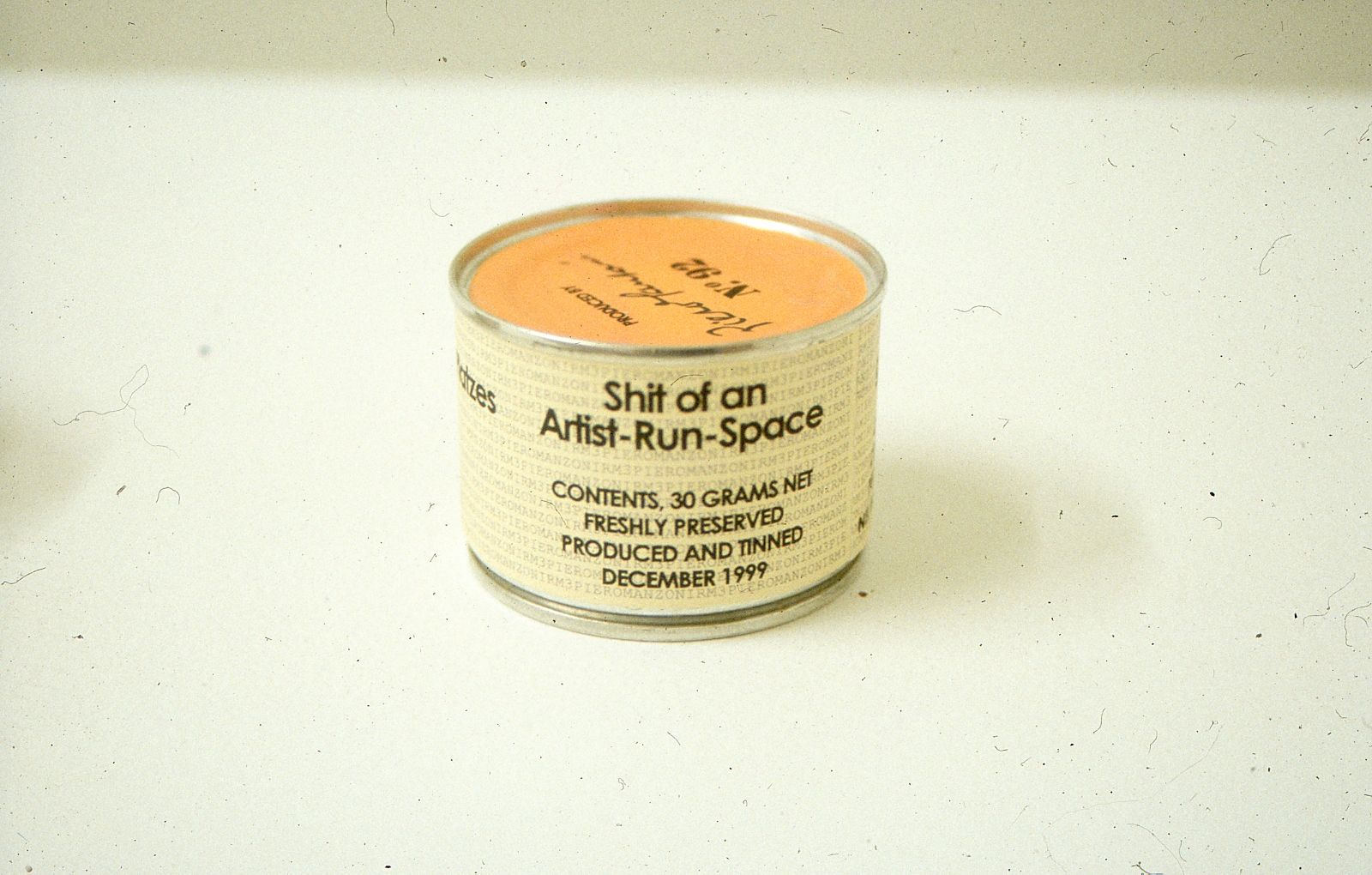
Image: Nicholas Spratt , A real shit of an artist-run-space, 1999
Enter our spaces from the street
the language of funding

RM is going through another one of its ‘funding crises’. Each time this happens there’s an urge to rail against the funding body. But calmer heads prevail; ‘don’t bite that hand that feeds’.
Investment
Making a monetary or other tangible contribution to a project or activity with the expectation of some form of return to the investor. Creative New Zealand expects its allocation of public funds to result in identifiable returns and benefits for New Zealand. The returns we seek are the outcomes stated in our Strategic Plan and Statement of Intent. We are more likely to contribute towards (‘invest’ in) projects and organisations that can clearly demonstrate an ability to deliver the results we are seeking.
(over)reliance
The reliance on centralised funding results in some constraints to both the gallery’s operation and its programme. Having a single funding body is efficient in terms of applications, accounting, and reporting, i.e. there’s no massive duplication of effort to keep various funding bodies happy.
But this does create (over) reliance and some instability. RM is on a contestable year-to-year funding cycle. This means it is difficult to plan more than a year ahead at a time. And the funding structures dictate the timing of our open call for proposals and subsequent scheduling. This is less complaint and more stating the (obvious) reality.
Integrated programme of work
An integrated programme of work may be offered in a variety of contexts, including programmes offered by an arts festival, an artist-run gallery, or a theatre company.
regurgitation
The funding application process requires some careful regurgitation of key words and concepts - strategic outcomes, programme purposes, high quality, innovation and development. To satisfy the criteria set by the central funding body, RM needs to ensure that its plan for the year ahead aligns with what the funding body is seeking to fund and hoping to achieve. It is a fairly simple relationship.
The obvious way to meet the criteria is to work backwards from that criteria. This means RM’s programme and planning documents are littered with parroted phrases drawn directly from the funding guidelines. Things are framed and reiterated as “encouraging artists to be innovative in their arts practice”; “ensuring access to a diverse range of arts experience”; and “improving artistic quality.” These are all worthy aims. But it means that in order to ‘tick the right boxes’ RM has to liberally deploy these keywords and phrases.
Innovation
Involves the creation of value out of new ideas, products, arts experiences, services, or ways of doing things. An ‘innovative’ arts practitioner will understand the skills and techniques required by their area of arts practice, but will not rely on established ideas, forms or ways of working. They will be actively investigating new ways of working and will be taking artistic risks.
Actual innovation will depend on context (when and where the project is to happen). It may exist in the form of the work, the process of creating the work, the way the work is presented, the ways the work engages with its audience, or the way in which skills and techniques are passed on.
proof of concept
ARIs are simple operations. The formula is really just a space + artists + people to run the place. All are important although the only one that has a set cost is rent for the gallery space. Paying artists is important but paying rent is the priority. No space, no gallery, no shows!
Assessment feedback of RM’s latest rejected funding request again raised the idea for a paid ‘facilitator’ role and ‘professionalisation’. We are already an institution in terms of longevity, but we’d prefer not to be an institution in a legal sense nor do we want to be an employer or involved in engaging ‘contractors’. A paid facilitator role would use up funding that could be applied to artist fees. If people are willing to volunteer their time there is no need to complicate things by adding an unnecessary paid role that removes essential and hard to get funding for artists. (Artists are often the last in the chain to get paid, if they get paid at all!)
High-quality
Assessors pay particular attention to the strength of the idea; the viability of the process; the experience and ability of the people involved; and the soundness of the budget. Applications that are strong in some, but not all, of the above areas are seen as having potential.
outsource provider
RM is just an outsource provider to the central funder to ensure they meet their statutory obligations and targets. The language prevalent in our funding applications and reports, and in the funder’s guidelines and procedures, spill from their establishing legislation. The central funding body is a creation (creature) of statue. The purpose and principles set out in the establishing statute trickle down, filtered through the bureaucratic layer, and working (worming) their way into our integrated programme of work – “encourage, promote, and support the arts”; “recognise and uphold the principles of excellence and innovation”. These become corporate like ‘values’ – participation, access, excellence and innovation, professionalism, advocacy.
The statute requires that guidelines for the allocation of funding be set. The legislative wording is expanded to become criteria and measures. Quantitative prevails over qualitative. A bureaucratic lens is cast over an ‘industry’ a community which would prefer to be anything but.
Success means having at least one publicly presented work, which has received some critical or sales success. This does not include presentations made as part of a course of study.
outsource outsource
RM also outsources the key part of its funded ‘integrated programme of work’. The artists are the ones producing the substantive work. That’s why ensuring a good portion of funding flows through to artists is important. After rent, most of the funding goes to artists. An aim is for artist fees to eventually equate to more than rent.
sustainable sources
The intention here is not to moan but to reflect on the realities. There will always be compromises to get funding, whether it be through central or local channels, private philanthropy, or ad hoc fundraising campaigns.
RM’s view has been that we should be funded through the centralised body. A proven track record and direct benefits attest to that. This is a selfish and self-satisfied position to take. But RM satisfies the criteria: “supporting activities of artistic significance that develop the creative potential of artists and art forms”; “maintaining and developing a professional arts infrastructure at both the national and community levels”; “promoting New Zealand’s arts and artists locally.” RM offers an excellent return on investment for the centralised funder. Returns sustained over time.
Why do we still exist?
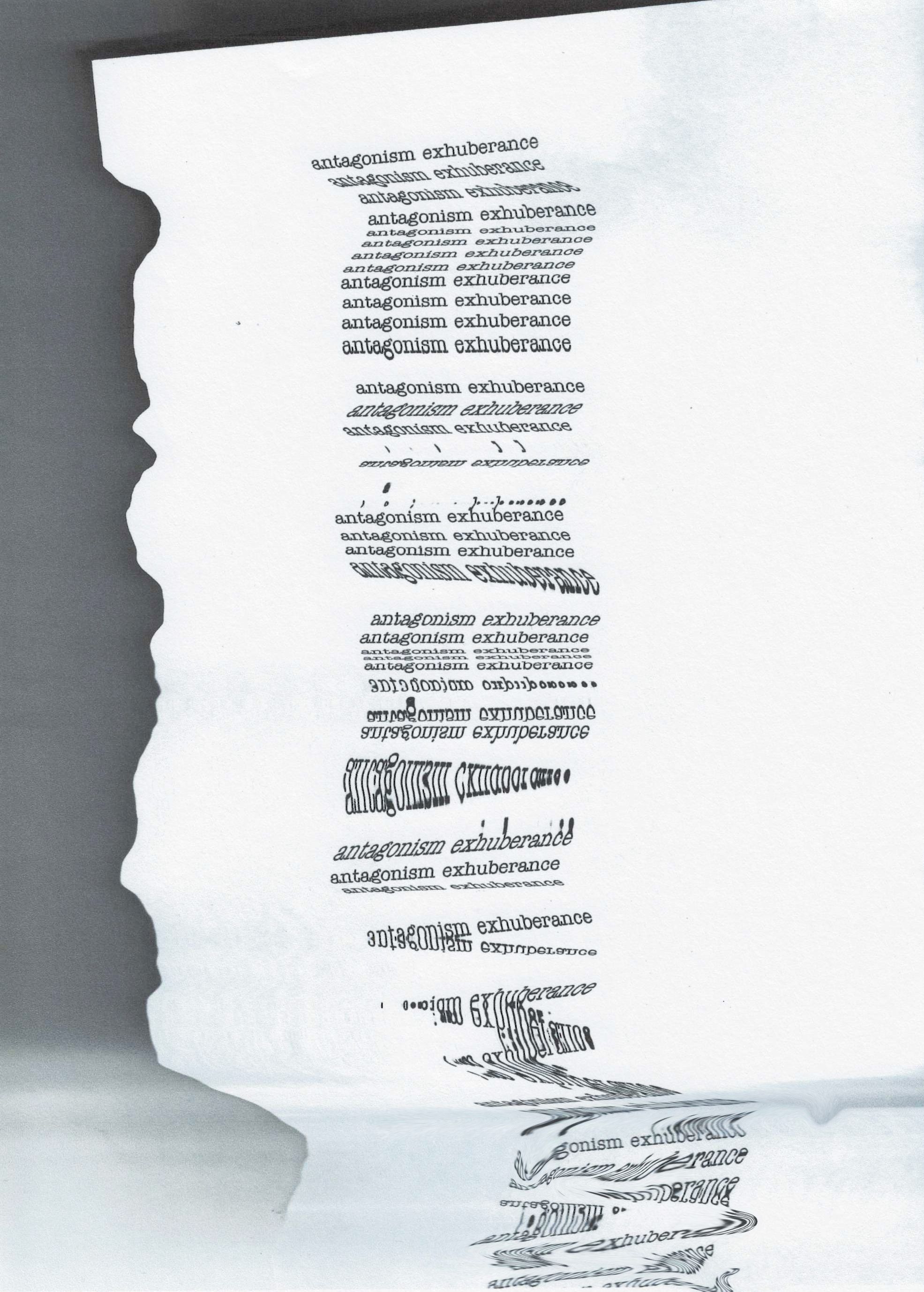
Image: Martina Copley, Blindside Gallery Coordinator & Artistic Director.
Failure
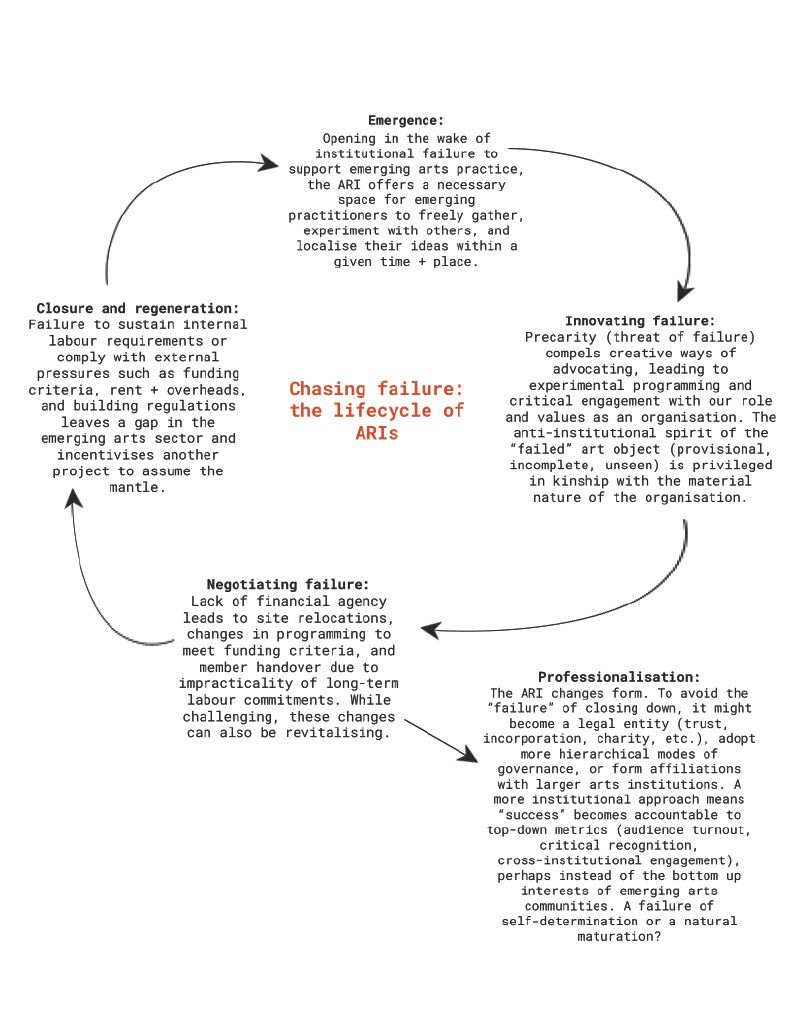
While failure has long since been romanticised as the horizon under which the ARI toils, a changed economic landscape means that faith in one self-determined artist-run project cropping up in place of another is increasingly unsustainable. Funding is scarce, rents are higher, and the cost of creating is greater now than it was 20 years ago. As evidenced by the waning optimism of exhibiting artists and initiative members alike, there is clear desire for new modes of support for emerging practitioners to openly exhibit and share without persuasion into more institutionalised forms. What might this look like? Throughout the Co-Ordinate exchange, our contributors have asked:
Should we be responding to failure head-on as part of the process? If our conditions of existence are always shifting, changing and we are adapting, at what point do we lose sight of who we want to be as a space? What does it mean to want to hold a space? Who are we serving?
Due to the scarcity model that we operate within, we have become accountable to our funders, our landlords and it always feels like we’re trying to push up, to evolve into something stable/ commercialised/professionalised? What impact does this have on the way that we operate? How do we program?
Commonly, forgoing the high-paced demands of maintaining a fixed gallery site has emerged as a possible way forward:
"Our two spaces are locally specific but regionally connected on a global scale. Should we be trying to exist like the other spaces in the world or should we have a different approach? Perhaps slowness?"
"What is the alternative? A slower approach, not linked to a physical space that requires rent, or delivery based on funding timelines seems like the obvious answer. But then who misses out? The artists who can no longer show and receive a fee? The audiences?"
"There’s an assumption that ARIs need to function as they always have – that includes a gallery space. Hosting new and experimental practices is important but that doesn't need to be tethered to one location. [...] Alternative methods of operation include a more ‘distributed model’ in suburban garages or pop up events and shows in empty shops. Online provides a freer and cheaper way to present work."
"If we can no longer rely on the fixed ARI as a model for new projects to inherit, these questions imagine how the process of regeneration might be subsumed into individual projects themselves. What if failure was preemptive in that we operated with no start and end point – no “closing down”? Maybe this way, the creative joys of failure could reign indefinitely without yielding to institutional success."
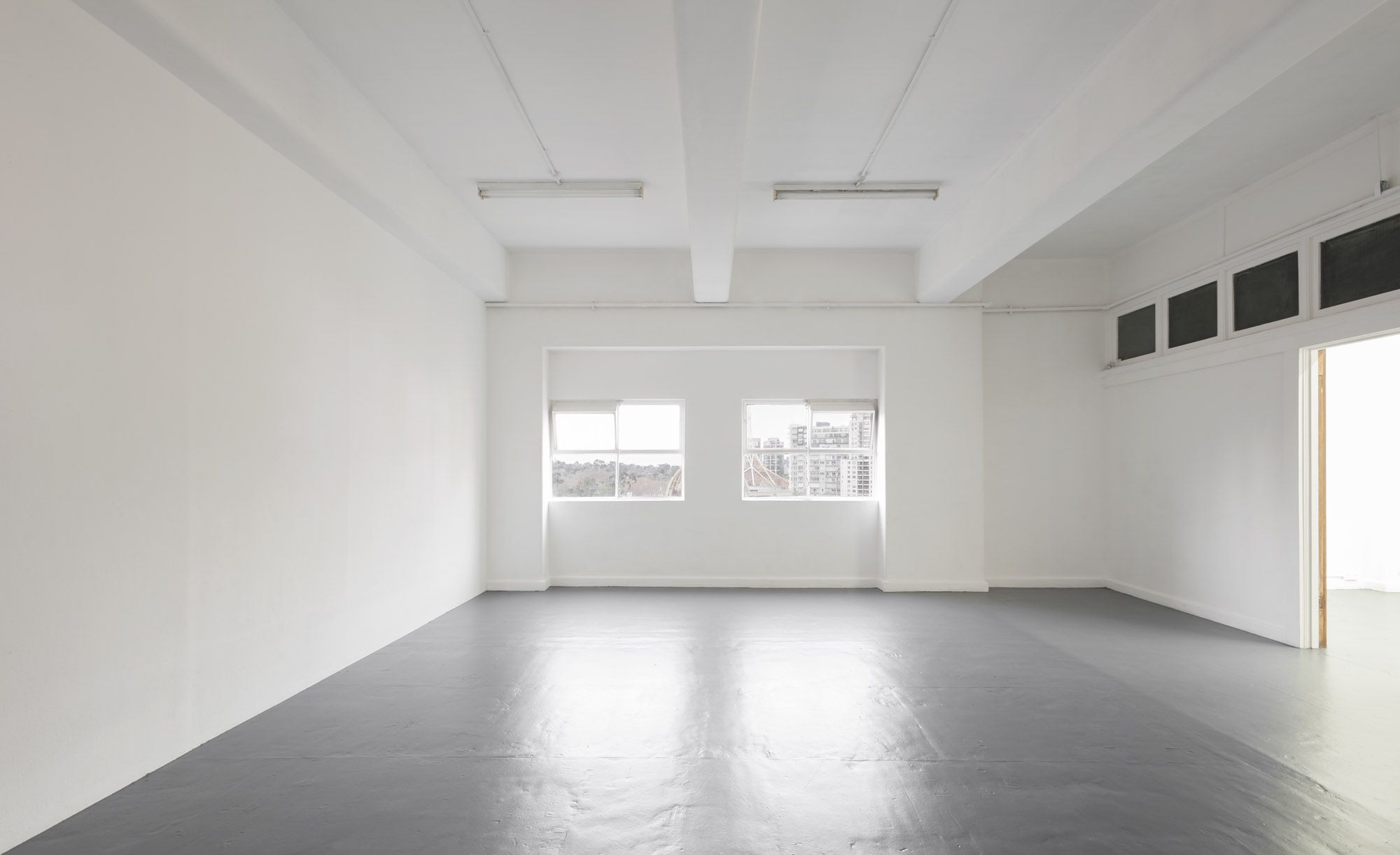
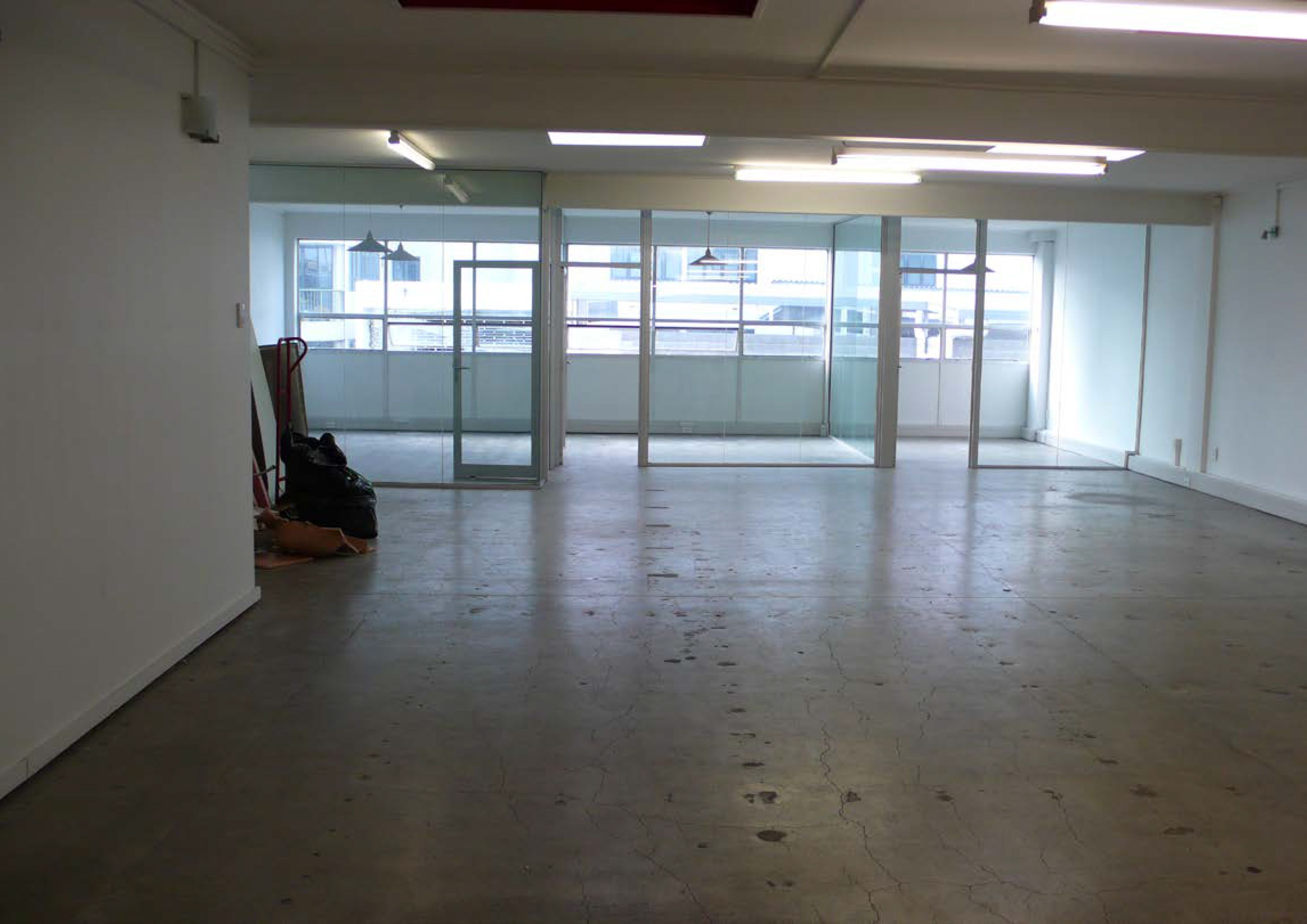
Image: RM Gallery Archive
Blindside and RM Gallery & Project Space are considering the Artist-Run Initiative (ARI) model across so-called Australia and Aotearoa. Engaging with current and previous collective members, exhibiting artists and audiences, the organisations are gathering anecdotal histories and personal experiences to add to the collective knowledge shared across both spaces. They are questioning the role of ARI’s in local communities, and looking to what the future of ARI practice may hold.
Bethany O'Connor (she/her) is an artist, writer and arts administrator. Most recently Beth has worked in strategy roles across universities and in the public sector supporting the creative industries. Beth grew up on Taungurung Country and is currently working and living on Wurundjeri Country with her partner and rabbit.
Emmy Robinson-Shaw (she/her) is a writer and arts worker living in Naarm. Her theoretical interests are social practice, contemporary aesthetics, and alternative economies in art.”
Mark Schroder is an installation artist based in Tāmaki Makaurau Auckland. He is currently a member of the collective that runs RM Gallery and Project Space. Prior to that he helped run Glovebox. Mark is also a member of the Public Share collective.
Georgia Cheesman is an artist, curator, researcher and arts worker based in Naarm. Georgia holds a Masters of Art Research (Exhibition Studies) from Central Saint Martins in London, UK, she also gained a Bachelor of Design (Fashion)(Honours) from RMIT University in 2014. Georgia has worked in arts administration, exhibition and project management, digital marketing, public programs and sponsorship. She is passionate about community engagement and is dedicated to supporting artists and their practice. She places emphasis on embracing positive growth and continuous learning in every experience. Georgia also maintains her own creative practice working with glass, metal and the body.

